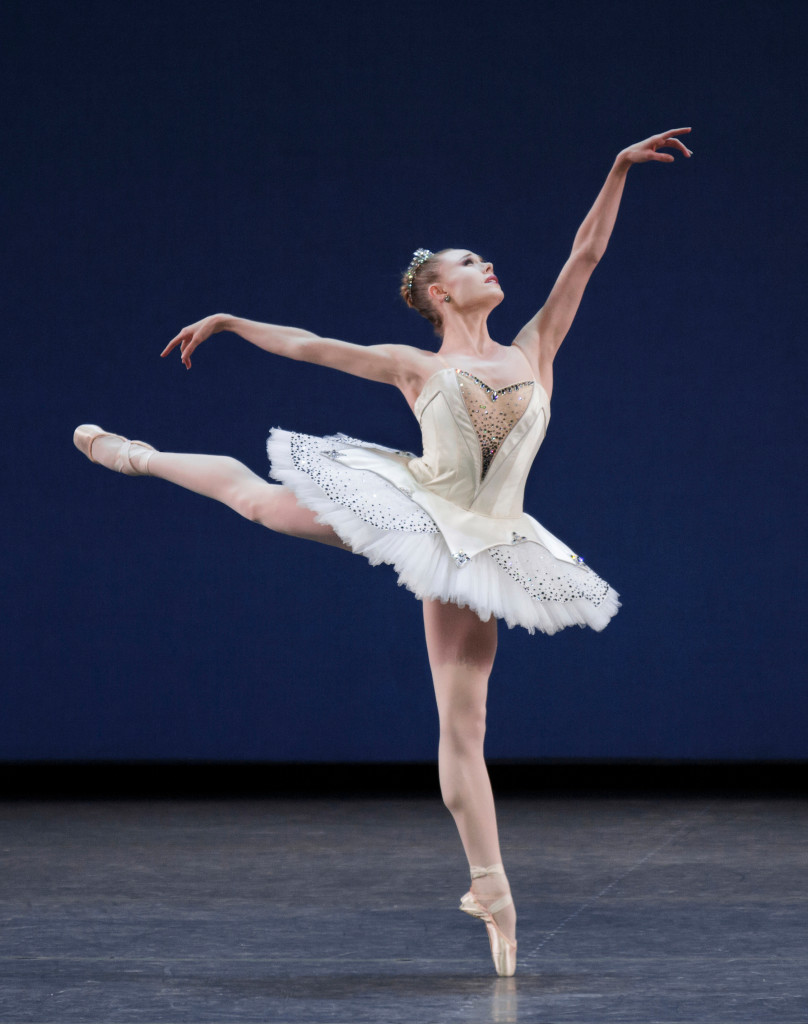 The new artistic director and co-director of the New York City Ballet looked a little nervous Tuesday as they awkwardly welcomed the Kennedy Center audience to their annual week-long residency.
The new artistic director and co-director of the New York City Ballet looked a little nervous Tuesday as they awkwardly welcomed the Kennedy Center audience to their annual week-long residency.
Jonathan Stafford and former company star Wendy Whelan, who had been in their new roles less than five weeks, are the first to lead the company with no direct connection to the genius who founded it more than 70 years ago, George Balanchine.
The City Ballet, one of the nation’s leading companies, had been deeply shaken over the last year or so, with the abrupt retirement last year of its longtime ballet master Peter Martin amid allegations of abuse. It was followed by the dismissal of three male principal dancers over texting explicit photos of women in the company. Among the reports that came out with the revelations was one about a wild party that demolished hotel room during a previous D.C. residency.
But Stafford and Whelan presided over the first of two programs that emphasized the artistic strengths of the company, in particular by stressing the legacy of Balanchine. Two of the four pieces in the Tuesday program were those he had choreographed; a third was by Jerome Robbins, the New York City Ballet choreographer perhaps more famous for his work on Broadway and film.
And as if to portend to a vibrant future for the company, there was a piece by Gianna Reisen, who is the youngest commissioned choreographer in company history. She created “Composer’s Holiday,” set to Lukas Foss’s “Three American Pieces for Violin and Piano,” when she was 18 (and she’s still a teen now, Whelan points out, at 19).
It opened the evening with bright, lively patterns with some surprising turns – a ballerina walks on the backs of bent over dancers, before she launches into the sky and the stage goes black. In another segment, a line of dancers enter holding hands, but two are being dragged.
To the Satie-like music played with finesse by Autoro Delmoni and pianist Susan Walters (who took a bow with the dozen dancers) there was a freshness was the piece, with female costumes in a variety of hues, before a spare indigo background (lit by Mark Stanley).
Emma Von Enck and Mary Thomas MacKinnon were mesmerizing leads in the piece, dancing with Kennard Henson and Roman Mejia.
A brief pause gave way to the first Balanchine of the night, his 1978 “Kammermusik No. 2,” using music of Paul Hindemith, with dancers in spiky and precise movements alongside the modernist music, while retaining the extraordinary skills of the troupe, whose arms seem extended forever and whose legs were steady throughout. It was a choreography that matched the ambition of the contrapuntal music, with an eight man ensemble dancing to the orchestra, as two couples dance in counterpoint to the piano. For three of the four featured dancers in the piece, Abi Stafford, Joseph Gordon and Russell Janzen, it was their first times in the roles, alongside a returning Teresa Reichlen.
Because Robbins choreographed “Opus 19 / The Dreamer” for Mikhail Baryshnikov in 1979, it’s hard not to see him in the Spanish dancer Gonzalo Garcia reprising the same strong central role. To music by Prokofiev’s Violin Concerto No. 1 in D major (solo by Kurt Nikkanen), he stands or spins in the middle of the darkened blue stage, as a dozen dancers approach and depart, as he seeks his counterpart in reality or in imagination (Sterling Hyltin).
The night’s finale, following a second intermission, drew gasps when the curtain was raised simply for the beauty of the costumes, designed in 2012 by Marc Happel, literally sparkling with Swarovski elements and topped with crowns.
It was one of Balanchine’s masterworks, and one that dates back as far as the founding of the company with Lincoln Kirstein in 1948. “Symphony in C,” based on once-lost music by Georges Bizet, is a tour de force in all four movements, led by Ashley Bouder and Tyler Angle in the first, Sara Mearns and Jared Angle in the second, Baily Jones and Anthony Huxley in the third and Erica Pereira and Anthony Scordato in the smashing conclusion that boasts more than 50 dancers on stage.
As dazzling as it was, it also had a couple of troubling instances of dancers slipping and in one case, falling, before it was over. Was it the surface of the stage? The rigor of a full night’s program? Whatever it was, it unexpectedly broke the spell of otherworldly elegance and back into the real world of danger, concerns and the storied ballet companies coming out of its own problems.
The program will be repeated April 3 and 7, but the second program April 4-6 sounds tantalizing as well, particularly for a Kennedy Center debut from the company’s resident choreographer, the D.C. native Justin Peck, to the music of Leonard Bernstein, “Easy.” There are also two pieces celebrating Robbins, one of his set to the music of Chopin, and the other an amalgamation by Warren Carlyle of some of the memorable work Robbins did for Broadway, including pieces from “On the Town,” “West Side Story,” “The King and I” and “Gypsy,” among others. Plus there’s a piece from choreographer Kyle Abraham that incorporates the music of Jay-Z and Kanye West, among others.